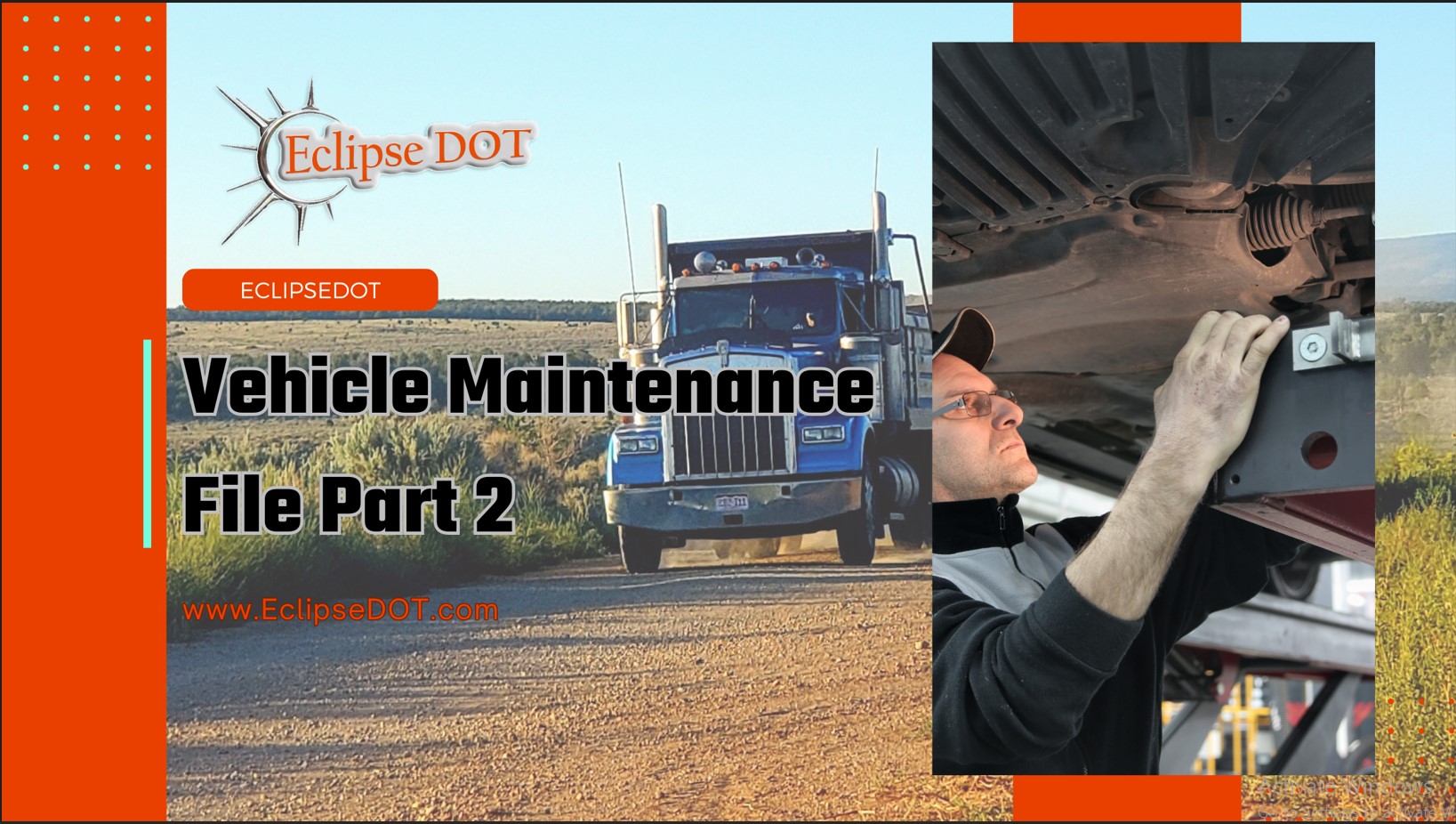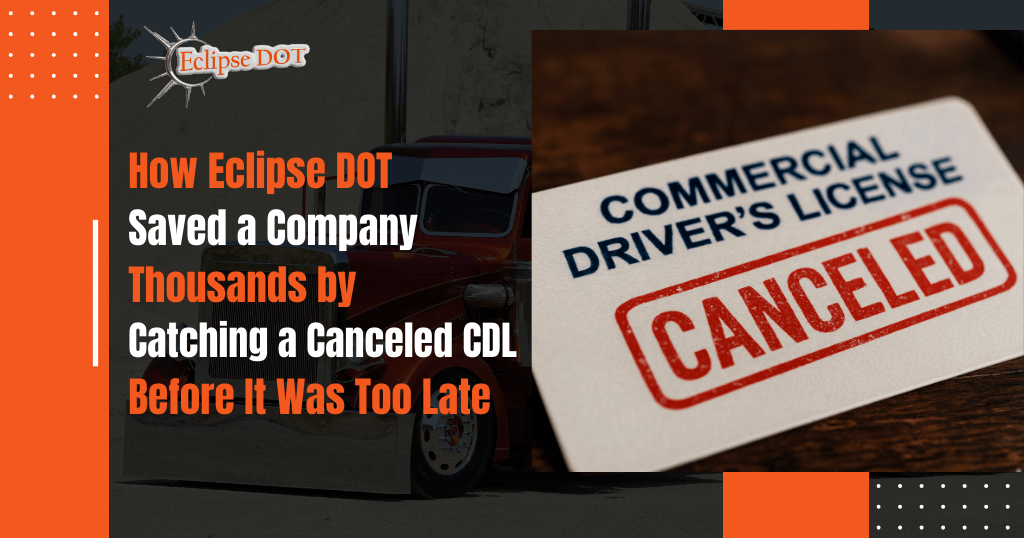Vehicle Maintenance File, Part 2
Starting with a fascinating fact: there are numerous regulations for companies operating commercial vehicles in our country!
The good news is that the Eclipse DOT team is here to simplify these regulations, making them easy to understand and even easier to follow.
In the first week, we covered the essentials of what goes into a vehicle maintenance file. Last week, we delved deeper into the initial aspects and emphasized the importance of keeping it simple (KISS: Keep It Stupid Simple).
We provided valuable insights and ideas to simplify compliance. So, let’s cut to the chase and dive right into today’s topic:
Maintenance Receipts:
- Keep all receipts for a minimum of one year for each truck.
- If you have the vehicle repaired at a shop, simply retain the receipt from them.
- If you perform the repairs yourself, keep receipts for every part you purchase.
- For parts obtained from a “donor” vehicle you own, document their source.
Now, let’s simplify this process:
- When you buy a part for a truck, make a copy of the receipt and place it directly in the truck folder.
- If the truck is repaired at a shop, add the work order to the truck folder.
But we take it two steps further for even greater simplicity:
- Within each truck folder, we create separate folders for “Maintenance Receipts,” just like in the picture!
- Inside the maintenance receipts folder, we further categorize by quarters and save the files accordingly.
This separation helps tremendously when you need to access specific vehicle records promptly.
We’ve assisted companies that lumped all their receipts into one massive folder. While this meets FMCSA guidelines, it’s not ideal. When you hand that huge folder to an officer and say, “Here it is, you can find what you need,” a few things happen:
- The officer may perceive a lack of organization.
- It could frustrate them because they have to hunt for the information.
- You’ve given them all the ammunition they need for potential issues.
Remember, in audits or litigation, only provide the information requested and required by federal regulation. Don’t hand over everything.
Now, onto DVIRs (Daily Vehicle Inspection Reports):
- You’re only required to keep inspection reports for the past 90 days.
- You only need DVIRs that show issues.
- DVIRs with issues require three signatures:
- The driver identified the issue.
- The safety person or leader who acknowledges the issue and its correction.
- If it’s not a safety-sensitive issue (e.g., a broken radio), there’s a box to mark it as not a safety concern.
- A driver signs off that the issue was corrected.
Due to the Paperwork Reduction Act, there’s no need to keep DVIRs without issues. You used to have to retain all DVIRs for 90 days, but that changed.
A note on DVIRs: If your driver undergoes a roadside inspection and violations are found, they should complete a DVIR listing those violations, even if they’ve already done one before. Then, the driver, a company representative, and another driver should sign off on it.
If you’re like me and prefer organized systems that work for you rather than the other way around, you’ll want to explore DOT Docs at www.DOTDocs.com. Eclipse DOT is developing an all-inclusive platform covering all your DOT needs from start to finish. We’re currently building the Vehicle Maintenance section, and it’s going to simplify vehicle maintenance files significantly.
Ready to explore more about these topics? Click here to dive deeper into eclipsedot.com/articles and drive your knowledge to new heights!






